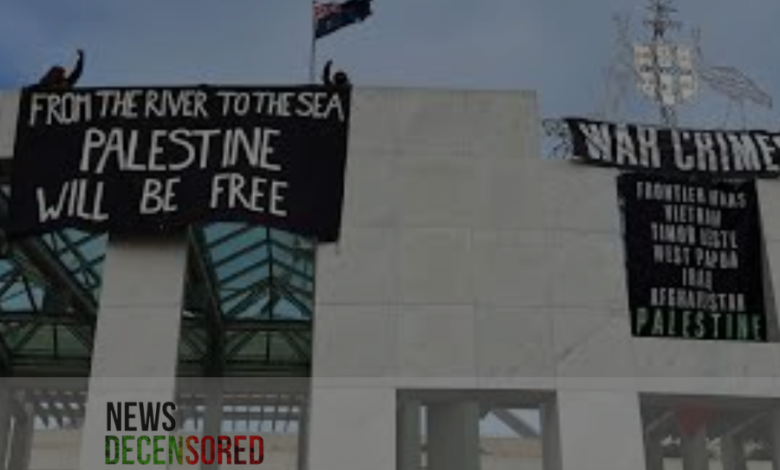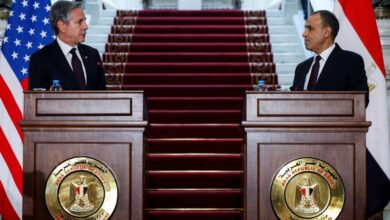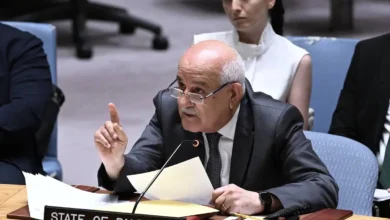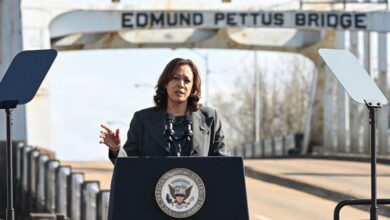Protesters in solidarity with Palestine climb to the roof of the Australian Parliament

One of the critical demonstrations took place on July 3, 2024, in Canberra, Australia, where a group of protesters even reached the Australian Parliament House roof. This act was organized to express solidarity with the people of Palestine. It reflects the increasing international concern and support for the Palestinian cause in issues arising in the region.
Early in the morning, the dozen protesters climbed the iconic building.
On display were large banners that read for the end of the occupation of Palestinian territories and called on the Australian government to hold a tight line, raising voices for the rights of Palestinians. One of the significant banners showed the words “Free Palestine,” and the other one read “End the Occupation Now.”
Public and media attention was quickly drawn to this most dramatic act of civil disobedience. The high-visibility-vested protesters with climbing gear stayed on the roof for several hours. They used this vantage point to display their banners, shout slogans, and give speeches on megaphones so that everybody could hear them.
The protest was part of a more significant international move in response to the recent escalation of violence—in Israel—between Palestinians from the Gaza Strip and police forces in Jerusalem and the West Bank. There has been a louder voice for Palestine than the international world has ever had, with several protests, rallies, and demonstrations held in different countries. But this Australian protest of sensational nature seeks to make public the plight on the ground through its audacious nature.
Security forces immediately took control of the situation by roping off the area around the Parliament House to avoid any untoward incident. Negotiators tried to talk to them to resolve the issue amicably. The protest remained peaceful, and continuous affirmations from amongst the protesters came in for peaceful protest, even if it involved arrest.
A majority of members of Parliament had mixed political reactions to the protest. Some sympathized with the protesters’ right to hold a peaceful demonstration and noted that the broader issues with Palestine must be addressed. In contrast, others were quick to criticize the method through which they were protesting. He said the situation may easily compromise the security and sanctity of the parliamentary premises.
That day, Prime Minister Anthony Albanese gave a press conference in which he recognized the protesters’ concerns but maintained the state’s official position regarding the proper negotiation of international conflicts by diplomatic means. He invoked humanitarian assistance in which such efforts from Australia were flowing to the communities in Palestine and spoke clearly of the need for a two-state solution if there was to be peace in the region.
Late in the afternoon, the activists got down from the roof of the building under their own steam, and the protest was disbanded despite police threats. The activists were arrested on the spot, but a spontaneous rally of supporters surrounded the police. Lawyers from civil rights organizations have already provided support, as the right to protest has to continue to be defended.
This incident has widened into a broader debate about what role Australia should play in international human rights concerns. It has led to controversies over policies related to the Israeli-Palestinian conflict. No doubt, this boldness of the protesters succeeded in bringing the limelight yet again on the Palestinian cause and successive predicaments of the Palestinian people.




